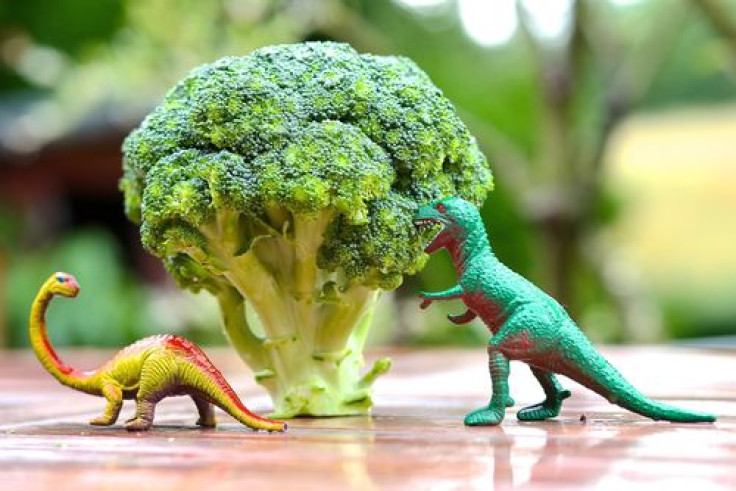Eat Your Veggies: Behavioral Theory Improves Vegetable Intake In Children Over Other Designs

Children need nutrients found in fruits and vegetables more than any other population, but their fight to keep the fork out of their mouth makes it difficult, and parents need to figure out how to work around their dinner table protests. USDA researchers collaborated with Baylor College of Medicine and the Federal University of Santa Catarina to review 25 years’ worth of studies to find out how to get kids to eat more fruits and veggies. It turns out vegetables have a better chance of being weaved into a child’s diet, and suggested strategies were published in the Journal of Nutrition Education and Behavior.
"Higher levels of fruit and vegetable intake protect against hypertension, heart disease, stroke, and other chronic diseases and may be a strategy for obesity prevention among children and adults, but fruit and vegetable interventions have been minimally effective," the study’s lead author Cassandra Diep, a researcher from the U.S. Department of Agriculture and Baylor College of Medicine, said in a press release. The in-depth review focused on how to slip more fruit and vegetables in children’s diets and found behavioral theory only worked to improve vegetable intake.
Diep and her research team set out to determine if there are certain ways to get kids to eat more veggies, whether that strategy is through a community garden or cooking classes. They analyzed the results of the 29 studies conducted between 1989 and 2013 to figure out if behavior theory was an effective way to increase vegetable and fruit intake. Out of the 33 strategies used, Diep said there was "little or mixed support for enhanced dietary change with use of theory, multiple theories, or a formal planning process in dietary change interventions."
One study published in the journal Appetite found kids who were served vegetable with soda ate 35 percent less vegetables than kids who were served with water. The soda mutes the sweetness of the carrot and subtly changes the child’s palate preferences. Parent intervention was the key to changing the amount of vegetables the child ate, and it works significantly better than just cheerleading the child to eat more.
Behavioral theories aren’t new to children. Teachers and parents use permanent and behavioral learning strategies to alter the way kids view their environment and how they view the catalyst of their behavior. For example, working with kids to taste test and try out different vegetables allows them to learn the different types and see the potential in them. Or, if their superhero is eating broccoli on TV, they become influenced by what they’re seeing and are likely to change their behavior and prefer to eat broccoli. Turns out, these theories only worked for vegetables, and fruit fell flat on having an improved effect.
A child’s attitudes, self-esteem, and social norms all affect how they’ll react to a new intervention strategy, which may be why their results are inconclusive. Each process needs to be individualized and focused on the child’s starting point and ending goal. Do they refuse to eat anything green or orange? Or are they open-minded to trying new veggies every once and a while but usually don’t like the taste because their big sister doesn’t? It’s all relative in the approach, which needs to be designed specifically for each child’s unique needs.
Source: Diep CS, Chen T, Davies VF, Baranowski JC, and Baranowski T. Influence of Behavioral Theory on Fruit and Vegetable Intervention Effectiveness Among Children: A Meta-Analysis. Journal of Nutrition Education and Behavior. 2014.



























